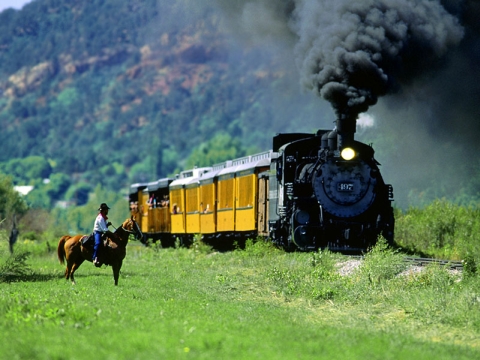Rund um den Grand Canyon
12. September - 08. Oktober 2010
17. Tag Dienstag, 28. Sept. 2010
Mancos CO - Durango CO
69 km
Heute fahren wir mit der historischen Eisenbahn
der Durango-Silverton-Narrow-Gauge-Railroad über eine der schönsten Strecken der Rocky
Mountains zu fahren. In
authentischen Eisenbahnwaggons, von einer Dampflok gezogen, geht' s über
Brücken und durch Tunnel, der
wildromantischen Schlucht des Animos Rivers folgend, von Durango nach
Silverton. Nach der Rückkehr lohnt
sich am Spätnachmittag und Abend ein Bummel durch das quirrlige
Westernstädtchen Durango.
Übernachtung auf dem Durango KOA Campground in den Rocky Mountains (sehr
laut!!).
Durango and Silverton Narrow
Gauge Railroad
From Wikipedia, the free encyclopedia
Locale La Plata County and San Juan County, Colorado
Dates of operation 1881–present
Track gauge 3 ft (914 mm)
Length 45 miles
Location: Right-of-way between Durango and Silverton, Colorado
Koordinaten: 37°17′51″N 107°42′39″W / 37.2975°N 107.71083°W /
37.2975; -107.71083Coordinates: 37°17′51″N 107°42′39″W / 37.2975°N
107.71083°W / 37.2975; -107.71083
Built/Founded: 1882
Architect: General William J. Palmer
Governing body: Private
Added to NRHP: October 15, 1966
Designated NHL: July 4, 1961
NRHP Reference#: 66000247
The Durango and Silverton Narrow Gauge Railroad (D&SNG) is a narrow
gauge heritage railroad that operates 45 miles (72 km) of 36-inch (914
mm) track between Durango and Silverton, in the US state of Colorado.
The railway is a federally designated National Historic Landmark and is
also designated by the American Society of Civil Engineers as a Historic
Civil Engineering Landmark.
The route was originally built between 1881 and 1882, by the Denver and
Rio Grande Railroad, in order to carry supplies and people to and silver
and gold ore from mines in the San Juan Mountains. The line was an
extension of the D&RG narrow gauge from Antonito, Colorado to Durango.
The Cumbres and Toltec Scenic Railroad operates the line from Antonito
to Chama, New Mexico. The line from Chama to Durango has been abandoned
and removed.
The line from Durango to Silverton, however, has run continuously since
1881, although it is now a tourist and heritage line hauling passengers,
and is one of the few places in the United States which has seen
continuous use of steam locomotives. In March 1981, the Denver & Rio
Grande Western sold the line and the D&SNG was formed.[3]
Some of the rolling stock dates back to the 1880s. The trains run from
Durango to the Cascade Wye in the winter months and run from Durango to
Silverton during the summer months. The depot in Durango was built in
January 1882 and has been preserved in original form.
William Jackson Palmer was a railroad engineer who rose within the
Pennsylvania Railroad to be secretary to the president. After he served
in the American Civil War as a general, he began dreaming of a
north-south Mexico–Colorado railroad, and he built the Denver & Rio
Grande Railroad. He believed narrow gauge lines were suited to the
mountainous areas of Colorado.
On August 5, 1881 the Denver & Rio Grande Railroad arrived in Durango,
Colorado. Durango was founded by the D&RG in 1880. Construction to
Silverton, Colorado began that fall. Only 11 months later did the D&RG
reach Silverton in July 1882. Trains hauling passengers and freight
began immediately. The Denver & Rio Grande Railroad became the Denver &
Rio Grande Western Railroad (D&RGW) in 1920, but is commonly known
simply as the Rio Grande.
The Silverton branch, as it became known, struggled under D&RGW
ownership following the panic of 1893 and the end of free coinage of
silver. The line struggled with low ridership, annual snowslides, and
several major floods. After World War II many tourists began to ride the
railroad. Freight declined to almost nothing as ridership incresed
dramatically. The D&RGW tried to abandon the line in the early 1960's,
but the ICC wouldn't allow it due to the dramatic increase in tourist
patronage. Following the ICC's ruling, the railroad reluctantly invested
more rolling stock, track maintenance, and improvements to the Durango
depot and adjacent area. The railroad was actively trying to sell the
line, and in 1979 Charles Bradshaw, a Florida citrus grower, offered the
D&RGW a legitimate opportunity to divest itself of its antiquated and
isolated line.
The D&SNG was founded by Charles Bradshaw Jr., of Florida, with his
March 1981 acquisition of the D&RGW's 45-mile (72 km) Silverton branch
and all of its structures and rolling stock.[3] Since 1971, this line
and the line that is now the Cumbres and Toltec Scenic Railroad had been
the only remnants of what was once an extensive Rio Grande narrow-gauge
network.[3] The original Durango roundhouse was completely destroyed by
fire in 1989. All six then-operable locomotives had been inside at the
time, and were damaged, but not beyond repair, and most were eventually
restored. A new roundhouse was constructed on the same site, opening in
early 1990, and its facade made use of bricks salvaged from the original
building.[3]
In March 1997 Bradshaw sold the D&SNG to First American Railways, Inc.,
located in Hollywood, Florida. Then in July 1998 the railroad was sold
again to American Heritage Railways. At the time American Heritage
Railways was headquartered in Coral Gables, Florida. Since then their
headquarters have been moved to Durango, Colorado. Now the D&SNGRR has
two museums, one in Durango and the other in Silverton. Many of the
vintage passenger cars have been returned to service.
|
|
|
|
|
|
|
|
|
|
|
|
|
|
|
|
|
|
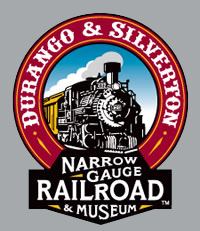
|
|
|
|
|
|
|
|
|
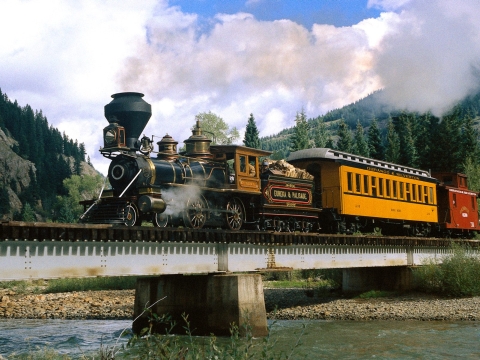
|
|
|
|
|
|
|
|
|
|
|
|
|
|
|
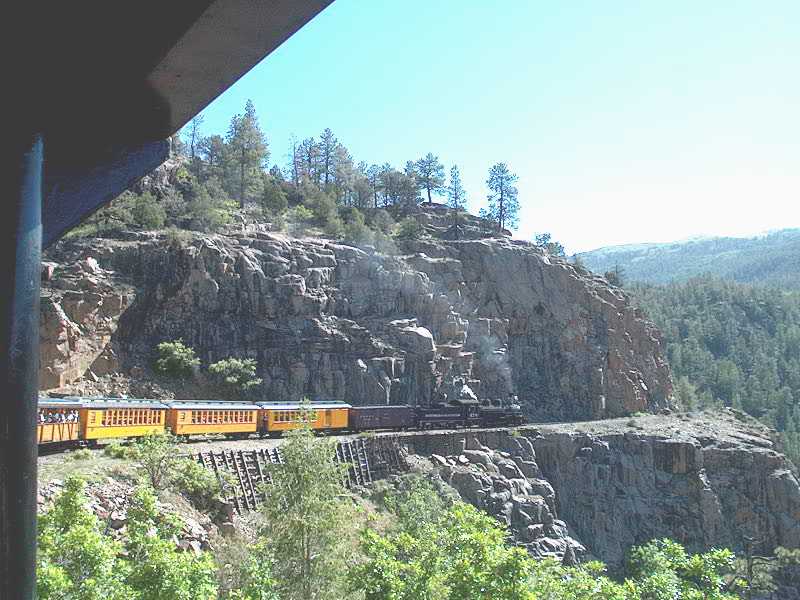
|
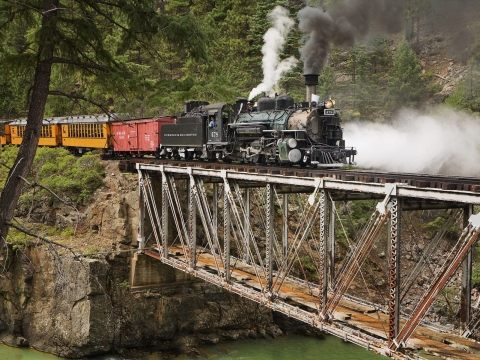 |
